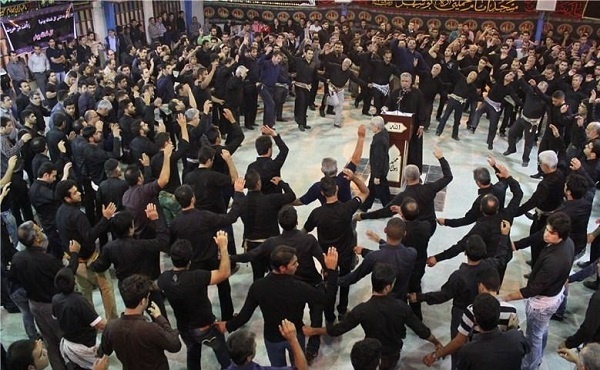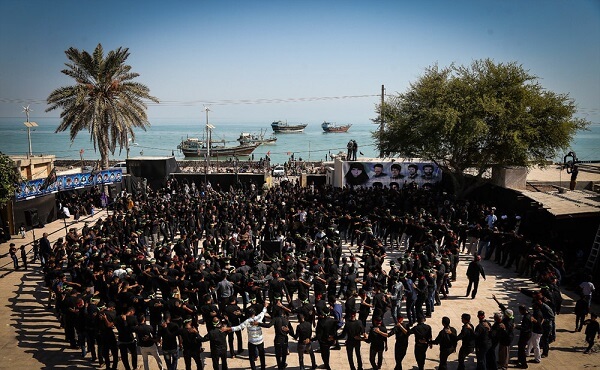If you are going to travel to Iran, you need to get acquainted with the culture of the Iranian people, and one of the most important of these cultures is the Ashura culture, which has a great impact on the daily lives of the Iranian people. Several days each year are dedicated to the mourning of Imam Hussein’s martyrdom and even his birthdays.
You hear a lot of “ya Hosssein” talking to Iranians, including after drinking every sip of water. The name of many Iranians is Hussein and its derivatives and combinations. Even in many, boards, buildings, inscriptions, flags and so on, this name and this culture manifests itself in Iran. To understand this deep and rich culture, we need to know the uprising of Imam Hussein.
Imam Hussein uprising
About 1380 years ago Imam Hussein and his family exhibited such courage and sacrifice to protect true Islam that has been manifested in many poems and stories to this day.
Imam Hussein, who was driven to Kufa by the great demand of the people, faced bad faith and with 72 of his friends in the Karbala desert engaged in an unjust war against thousands of soldiers resulting in the martyrdom of them and their beloved family. Imam Hussein, his children, his family and his companions were martyred in the worst possible fight on the tenth day of Muharram, after which their sister, with their enlightenment, recorded these events in history.
Link of Iranian and Ahl Al Bait
Shiite Iranians mourn the first day to the tenth of Muharram. It is known as first decade of Muharram. Of course, some ceremonies will continue until the second and Third Decade. In addition to these days, forty days after the martyrdom of Imam Hussein is called Arbaeen, and some other rituals are held in different parts of Iran. A link between the Iranian and the Ahl Al Bait is unbroken and could never sepperatefrom each other. Interestingly, if you are in Iran, you will feel the same pation among people.
Most people from different age groups even children are present at ceremonies. Every year, large institutions and think tanks from all over the world have many researches to find about this historical link, and even some governments charge millions of dollars, which reduce this passion and make distance between the people of Iran and the Imam Hussein, but, however this ritual are held more gloriuos and these mourning people create a beautiful scene in the country that highlight the black color and the beauty in it.
Ashura Uprising the source of power
The great theorists of the world after many investigations concluded that perhaps the Iranian and Shiite powers originated from the uprising of Ashura because in that courage, sacrifice and devotion, patience and tolerance wave, in fact what makes the Iranians and Shiites brave and fearless against enemies is Ashura. The most fascinating part of this uprising is its spread in the Muslim life so that every year can see the growth of Ashura thinking in everyday life of people. One of the biggest incidents associated with Ashura is walking in the fortieth day of the martyrdom of Imam Hussein in Iraq and near the city of Karbala, which millions of Muslims participate.
The most special mourning in Iran
For Arbaeen, the people of each region depending on culture and language, there are certain customs in the mourn of Imam Hussein. We could have following examples, each of which has been seen by many visitors each year, to observe the greatness, glory and of course the beauty of this kind of mourning.
Bijar
The ceremony of Ashura and tasusa Hosseini in Bijar is a low-peer ceremony. By seeing the crescent of Muharram in the sky of Bijar, a few black flags are raised on the roof of the Mosques. The people on the tenth day of Muharram, remembering Imam Hussein and his friends who were thirsty in Karbala, become barefoot and do not drink water.
Turkmen Sahra
Some of the Turkmen take fast in first decade of Muharram. As they believe, they remember the thirst and hunger of Imam Hussein (A.S.). Aq ghala’s Imam Jome where is a village in Turkmen Sahra, says: (Turkmen people believe that who has no interest in the Ahl Al Bait of the prophet,is not true Muslim.) Turkmen gather in mosques on Ashura and Tasua Day, feed and mourn the needy. Turkmens of northern Khorasan make special loaves of bread in the days of Muharram and distribute it among the mourners of Imam Hussein. They also have a look at families that have lost loved ones in the past year.
Azerbaijan
Azeris have special devotion to the Prophet’s family, especially to Imam Hussein (AS) and his loyal companions.Turk origin people In our country,in Muharram days, alleys and houses are blackened, and even infants wear black. Azeris have a special ceremony on Muharram. One of these ceremonies is brunch. Two days before the beginning of the month of Muharram, the commemoration begins. The ceremony begins with a funeral; and people mourn in the mourning of Prophet Abul Fazl. The elders of the delegation, called “Hussein Qi”, are responsible for the ceremony. One of them holds up his flag and moves forward, and the other Hossein Qi holds a blank crate behind him. They are followed by other Hussein Chi with musk and water jars. In the meantime, the cry of “Labaik Ya Hussein”, “Ah Hassan, Ah Hussein” is heard. They put the pot in a corner of the mosque or Hosseiniyeh and empty the jars and musk in it. After this, the funeral of Prophet Abul Fadl (AS), Prophet Ruqayyah (AS) or Ali Asghar (AS) is read. Then everyone in turn kisses the pot and drinks a glass of water with the intention of blessing.
Kermanshah
From the Qajar era onwards, in Kermanshah, many anchors were built in the center of the city, where mourning ceremonies are held. Chain groups in Tasua and Ashura Hussaini mourn outside the mosque. Various mourning bodies, leaving Alam and Kottal, along with chainsaws and gauges, leave the mosque and go head to the martyrs’ tombs. All around the kottles, the old men of the city sang a song, sang poems in the mourning of Imam Hussein (AS) and the women wept behind them. In Kermanshah the villages of Kundoleh and Fash have special mourning ceremonies. Village mourners go to other villages and are welcomed in each village. The symbolic cradle of Ali Asghar (AS) is also carried on the shoulders of the people.
Amol
In Amol like other cities in Iran, people and city were blackened. Most people keep their vows for the month of Muharram and their vows are mostly soup, dates and syrup. Palm surrounding ceremonies are common in Amol and the villages. From the first to the seventh day of Muharram, people mourn and do their vows these days. On the seventh day, all the people go next to the palm and say hello. They believe that the palm is the coffin of Imam Hussein (AS). On the eighth day, people take out the palm tree and turn it to the village. On the eighth, ninth and tenth days of the people who have the vow of milk, they distribute the milk among the people, and when the palm-tree arrives in every house, the men of the house give their vows. At night of ’Sham e Ghariban’ drive the palm around the village, and barefoot and candle-bound people go to Imam Zadeh with their palms, mourning and mourning until the morning
Khorramshahr
Khorramshahr, Iran’s Karbala, and a Nineveh story, was long known to Najaf Sani for having dozens of Husseiniyas. On the days of Muharram, various groups mourn in Khorramshahr. Delegations of Kurds, Lurs, Bushehris, Azerbaijanis and Arab tribes mourn in various ways. Traditional mourning is taking place in Husayniyah Haidariyeh, which is more than two hundred years old. In the Jame mosque of the city many people gather in memory of the martyrs of Karbala. In Shalamcheh, where there are thirty thousand martyrs, pilgrims and caravans of mourners stand at Karbala Hosseini, singing and mourning the Ashura pilgrimage. On Muharram days, travelers from all over the country travel to Shalamchah for mourning.
Kashan
In the month of Muharram, the love of the Kashanis towards the Ahlul-Bayt (AS) reaches its peak. Thousands of mourning bands are formed and the city becomes blackened. The streets are full of red, green and black flags. The mourning begins at the beginning of Muharram and ends at the end of month Safar. The special ceremony runs from the 1st of Muharram to the 16th of Muharram, known as the “Six Imams Hussein (AS)”. On these nights, everyone is mourning in the mosques and Husseinieh. There are thirty mourning bands in Kashan, each band, carrying signs of Karbala, which are the most famous signs are Alam, Kottal, Togh Joraideh, Shesh goosheh, Alghameh river, palm and foraat river.
This post is also available in:  中文 (Chinese)
中文 (Chinese)

















